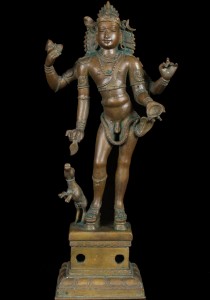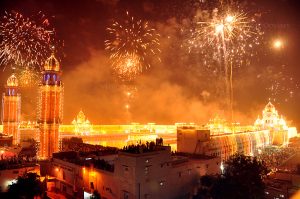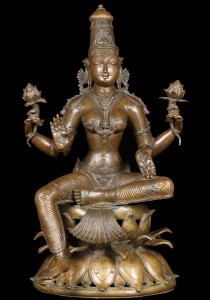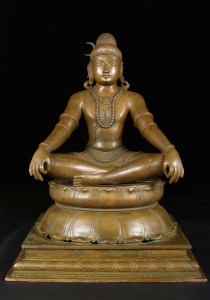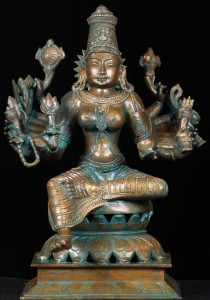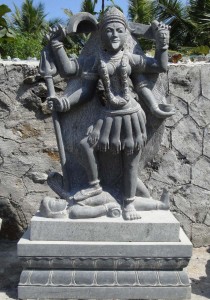
According to Hindu teachings, Kali is Goddess of time or change, but is most notably known by non-Hindus for her darkness and violence. Much like Shiva in the form of Bhairava, her earliest incarnation was that of an annihilator of evil within the world. She is often depicted in grotesque fashion as her terrifying eyes and shrieking expression horrify. Kali is referred to as ‘the black one’ as she is thought to have been the first creation before light itself and her very presence is said to convey death and destruction.
Within her most famous Hindu legend she comes to the aid of Hindu Goddess Durga and her assistants as they attempt to slay the demon Raktabija. They attempt to wound him with various weapons but come to find that with every drop of blood they inflict he only multiplies in form. His duplicates overwhelm them and they call upon Kali for aid. Instead of Kali being summoned, however, Durga herself manifests into Kali’s form.
‘Out of the surface of her (Durga’s) forehead, fierce with frown, issued suddenly Kali of terrible countenance, armed with a sword and noose. Bearing the strange khatvanga (skull-topped staff), decorated with a garland of skulls, clad in a tiger’s skin, very appalling owing to her emaciated flesh, with gaping mouth, fearful with her tongue lolling out, having deep reddish eyes, filling the regions of the sky with her roars, falling upon impetuously and slaughtering the great asuras in that army, she devoured those hordes of the foes of the devas’
Kali slays the Raktabija by sucking every last ounce of blood from his body and devouring his duplicates. She rejoices in victory and dances upon the fallen in triumph. Her ferocious celebration is said to have consumed her fully, unable to stop herself from stomping on the slain. In order to snap his consort Kali out of her violent elation, God Shiva laid down amongst the dead beneath her feet. The instant her foot touched her beloved Shiva she was able to calm herself. This is why Kali is often depicted standing atop Shiva.
Although Kali is often seen as a terrifying and vicious slayer of demons, in union with Shiva she is said to help create and destroy worlds.

